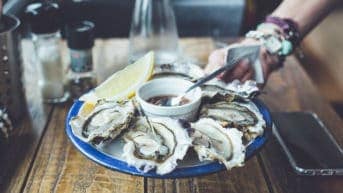One way to avoid poor performance in your stock portfolio is to look at examples of how stocks end up having poor performance. Here’s an example with High Liner Foods (TSX:HLF).
High Liner stock was a superb investment from 2008 to 2014, delivering about 32% per year. However, it has been a horrible investment since 2014, losing about 70% of its value. Adding in the dividends didn’t help much because the total returns would still be -61%, equating to an annualized rate of return of about -17%.

High Liner’s recent history of acquisitions and divestitures
High Liner acquired the North American marketing and manufacturing business of Fishery Products International in 2007. That helped drive amazing growth, as over the next three years High Liner’s earnings per share increased by 150%.
High Liner also made a few acquisitions from 2011 to 2014, but as a whole, they weren’t as accretive as the previous acquisition. Perhaps customers had a change of taste as well and they reduced their consumption of seafood.
In 2016, High Liner sold its scallop business assets along with the New Bedford, Massachusetts facility, which reduced revenues and earnings for 2017. And in 2017, High Liner acquired Rubicon Resources for $107 million. High Liner’s enterprise value is only about $606 million. So, Rubicon was a meaningful investment.
Rubicon supplies premium shrimp products to retail and food service customers across North America. Shrimp is the second-fastest growth category in seafood. So, Rubicon should be a good fit for High Liner, which processes and markets value-added frozen seafood in North America. However, earnings continued to lose ground in 2018.
Will growth resume for High Liner?
High Liner has been restructuring the business with the goal of net run-rate savings of more than $10 million per year. This includes aligning the core functions of its Canadian and U.S. operations to improve efficiency and to benefit from economies of scale. This accounts for 70% of the estimated savings.
High Liner’s other initiatives include reducing its product offerings, so it can focus on profitable and high-growth products. If the restructuring goes smoothly, High Liner expects to generate profitable organic growth by 2020.
How to avoid poor performance in your stock portfolio
Management makes acquisitions thinking that they’ll add value or be accretive. However, that’s not always the case.
In 2015, High Liner stock was bid up to a price-to-earnings multiple of higher than 20, as the market had rosy thoughts about the growth that the recent acquisitions could bring at the time. The growth didn’t materialize.
Investors can avoid poor performance in their stock portfolios by aiming to pay fair to low multiples for quality businesses and to always be skeptical about rosy futures of any business.
Final thoughts on High Liner
Currently, High Liner is a “wait-and-see” turnaround story. The analysts from Thomson Reuters have a mean 12-month target of US$5.30 per share on the stock, which equates to CAD$6.89 per share based on a more conservative forex of US$1 to CAD$1.30.
Analysts are pretty bearish on the stock. However, if Higher Liner’s initiatives start showing value, analysts will be increasing their estimates on the stock. Until then, it’s better to invest elsewhere.








